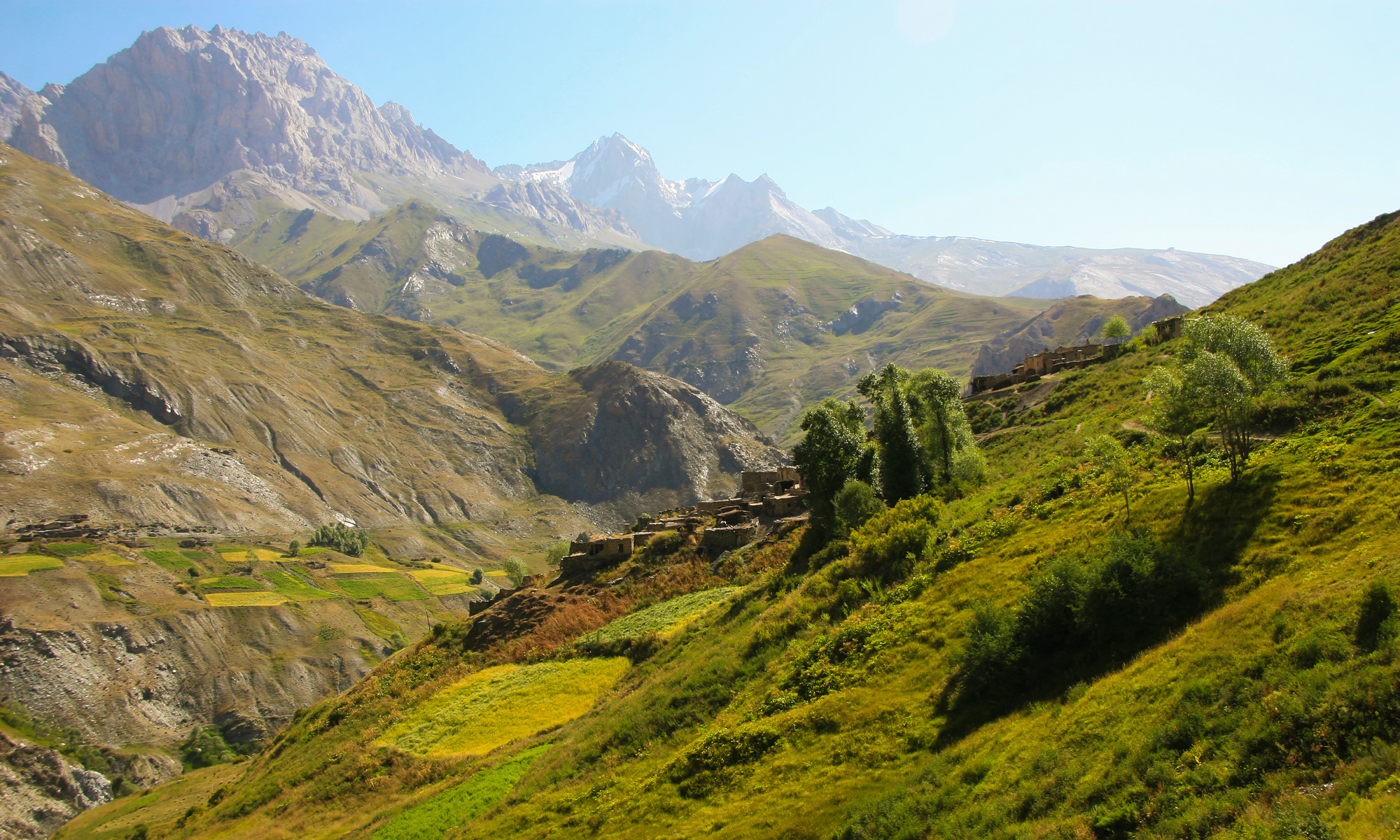In the steep, folded terrain of the Yaghnob Valley, climate is not a constant. It changes ridge by ridge, slope by slope, ledge by ledge. One village sits in constant wind; the next in a pocket of frost. Where the sun melts snow before noon on one field, its neighbor may remain frozen well into April. Here, weather is personal, and adaptation is not a theory—it is a tradition.
In this unique ecological mosaic, communities have developed a deep, practical understanding of microclimates—local atmospheric conditions that vary dramatically over short distances. This knowledge has allowed generations of Yaghnobi farmers, herders, and builders to survive and thrive in an otherwise harsh alpine environment. But as climate volatility increases, that finely tuned system is under threat.
Though often mapped as a single unit, Yaghnob is a collection of distinct micro-valleys, each shaped by altitude, exposure, wind channels, and hydrology. The main river threads through a central spine, but tributaries, terraces, and ledges create a fractal-like geography.
Data from community surveys and ethnographic fieldwork reveal stark microclimatic differences:
-
Some villages are snowed in weeks longer than others just a few kilometers away.
-
Certain fields lie in frost pockets, while others benefit from warm southern exposure.
-
Rain-shadow effects leave some plots dry, even as neighboring slopes flood.
In such a landscape, agriculture, architecture, and daily survival depend on knowing the small differences—where the wind breaks, where the snow clings, where the sun lifts the cold.
Homes in Yaghnob are built to match their microclimate—not in theory, but in practice, honed over generations:
-
Thick stone and mud walls, up to 70 cm, insulate against harsh mountain cold.
-
Small windows and low ceilings preserve warmth in frost-prone zones.
-
Straw-packed roof layers add thermal resistance and absorb snowfall weight.
-
Takhts (raised platforms) keep sleeping areas away from icy ground floors.
In sun-rich ledges, designs adjust: open courtyards, larger ventilation holes, and extended rooflines accommodate warmer conditions and seasonal drying of food, herbs, and wool.
Every home is a climate adaptation strategy—a local blueprint for resilience.
In Yaghnob, there is no “planting season” in the singular. Instead, each hamlet follows its own micro-season based on slope, shadow, and soil:
-
Barley and lentils are planted in colder plots due to their frost resistance.
-
Pulses and herbs like shirin-bu (literally “sweet scent”) flourish in humid, shaded terraces.
-
Fruit trees—rare in Yaghnob—survive only in the most sheltered, south-facing niches.
Farming is not mechanized, but memorized. Elders guide sowing times with phrases like:
“Don’t plant where the shadow sits at noon.”
“If the frost drinks the flower, wait a week.”
Yaghnobi tools are designed not only for tasks, but for conditions:
-
Short-handled sickles in wind-exposed areas minimize seed scatter.
-
Winnowing baskets (bādkunak) are used only in favorable wind directions.
-
Blacksmiths shape axe handles depending on sun-dried wood characteristics—because cold-chilled metal warps, and shade-dried wood splits differently.
Such refinements, passed down through lived experience, constitute a form of climate-specific technology—low-tech, high-precision, and locally resilient.
However, as the climate shifts, microclimate wisdom faces new uncertainty.
-
Unseasonal warm spells melt snow too early, then re-freeze it, damaging soil structure.
-
Late frosts destroy flowering crops that bloomed on outdated cues.
-
Heavy, localized rainfalls overwhelm old irrigation routes and trigger erosion.
Farmers report that once-reliable indicators—snowlines, bird calls, plant budding—now offer contradictory signals.
“We used to know when the snow would melt. Now it melts, freezes, then melts again.”
This erosion of predictability is not dramatic, but it is dangerous. It weakens traditional resilience systems, and with them, the ability to adapt without external aid.
Global climate responses often operate at the national or regional level. But Yaghnob calls for ultra-local solutions:
Recommendations for Microclimate-Based Adaptation:
-
Village-level climate mapping to record sun exposure, frost zones, and water availability.
-
Altitude-specific seed banks, preserving and distributing varieties suited to local zones.
-
Youth training in traditional weather-reading, integrating modern climate data where possible.
-
Support for adaptive homebuilding, including insulation and flood-safe designs.
-
Inclusion of microclimate resilience planning in the Natural-Ethnographic Park proposals.
Yaghnob’s survival has never depended on generalized resilience—it has always relied on place-specific wisdom. Supporting that precision should be a cornerstone of any adaptation policy.
There’s a saying in the valley:
“The wind that bends the tree doesn’t touch the one below the wall.”
The Yaghnobi people have long lived in dialogue with their microclimate—sowing by shadow, building by wind, harvesting by silence. As the global climate grows more erratic, the preservation of this knowledge is essential.
To protect Yaghnob is to protect a way of seeing and adapting.
